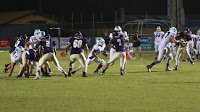Changes in Patient-Reported Outcome Measures from the Time of Injury to Return to Play in Adolescent Athletes at Secondary Schools with an Athletic Trainer
Simon J, Valier ARS, Kerr ZY, Djoko A, Marshall SW, Dompier TP. J Athl Train. 2019. [Epub ahead of print]
Take Home Message: Many high school athletes had meaningful improvements on both generic and region-specific patient-reported outcome measures after a lower extremity injury; however, remained below normal scores at return to play.

Return to play is predominantly determined using clinical outcome measures (range of motion, strength, fitness). However, using only clinical outcome measures to determine readiness for return to activity poses a threat for a safe return to activity since these measures fail to assess a patient’s readiness to return from his/her point of view. A clinician can fill this gap by implementing the use of patient-reported outcome measures (generic health quality, injury/region specific). However, research to support the use of patient-reported outcome measures in a high school setting is lacking. Therefore, the authors collected data from 69 athletes from 24 different high schools that suffered a knee, lower leg, ankle, or foot injury. Eligible athletes sustained one of the aforementioned lower extremity injuries that kept them out of play for at least 3 days, completed the surveys within 3 days of injury and when returning to play, had to be primarily rehabbed by their athletic trainer, and attended a school that is a part of the National Athletic Treatment Injury and Outcomes Network (NATION). The athletes completed generic patient-reported outcome measures (Patient-Reported Outcomes Measurement Information System [PROMIS] survey, Global Rate of Change Scale, and Numeric Pain Rating Scale), and region-specific measures depending on if the injury was at the knee (Knee Injury and Osteoarthritis Outcome Score [KOOS], n=47), or the lower leg, ankle or foot (Foot and Ankle Ability Measure [FAAM], n=22). Change scores for each survey were calculated and compared to ascertain if it exceeded a meaningful important change. The average return-to-play time for lower leg, ankle, and foot injuries was ~18 days, where athletes that suffered knee injuries returned after ~70 days. The greatest difference from initial to return to play visits were seen within the region-specific measures (KOOS and FAAM). The patient-reported outcome measures where the most athletes exceeded a meaningful important change was the global rate of change scale (65% athletes that suffered knee, 71% of athletes that suffered lower leg, ankle foot).
This is an important study as it suggests that using both generic and region-specific patient-reported outcome measures provided more information about how high school athletes perceive his/her health following a lower extremity injury. Specifically, the authors found that the athletes perceived improvements in global rating of change, pain, and region-specific health the most as they recovered from their respective injuries. However, it was alarming that a large proportion of athletes failed to experience meaningful important change. This suggests that athletes returned to play without achieving optimal health. It would have been helpful to also know how many athletes also returned to play with patient-reported outcomes scores below a patient’s acceptable symptom state, which could tell us if a patient was OK with their degree of symptoms. The authors acknowledged that many students had PROMIS Lower Extremity scale scores below the normative values for a similar population. This could be attributed to the fact that at prior to an injury, high school athletes have lower than normal scores on these patient-reported outcome measures; therefore, it would be interesting to collect baseline scores to identify if that achieves a more effective comparison. Currently, medical professionals should be aware of the advantages (gaining an athlete’s perspective of health) and disadvantages (difficulties in interpreting scores) of implementing patient-reported outcome measures. If a patient has lower than expected scores it may help stimulate a valuable conversation with the patient.
Questions for Discussion: Do you use patient-reported outcome measures? If so, what strategies do you implement to effectively collect patient-reported outcome measures during your rehabilitation?
Reviewed by: Jeffrey Driban
Related Posts:

